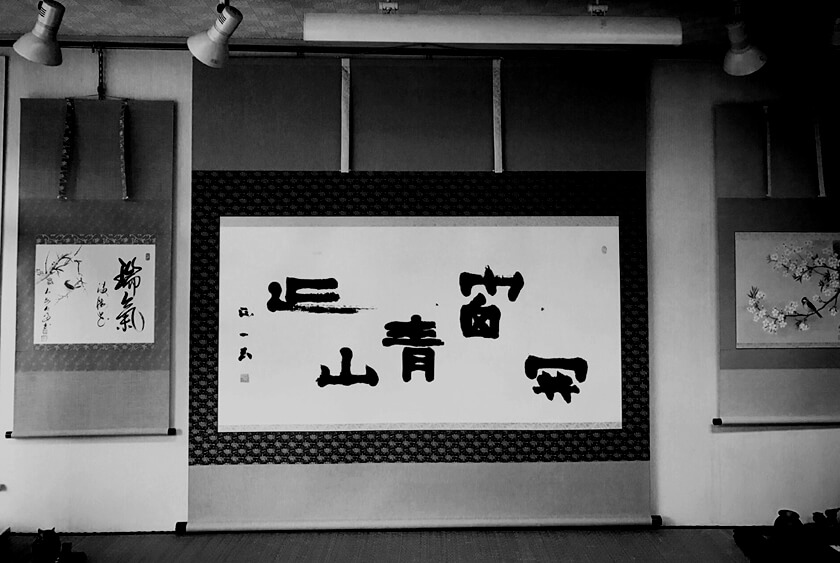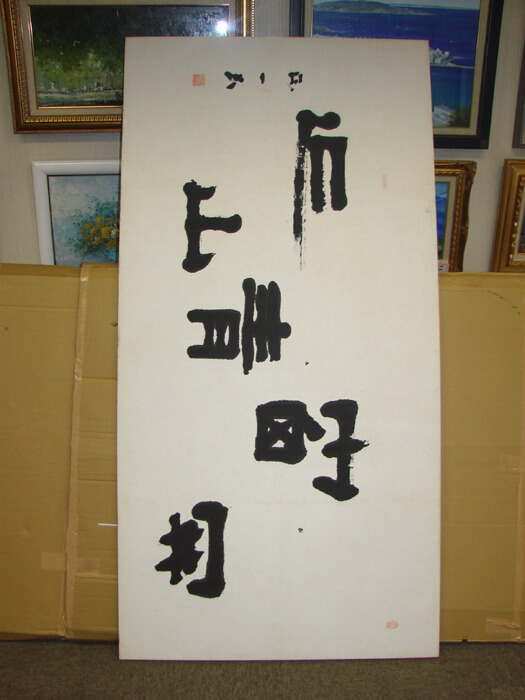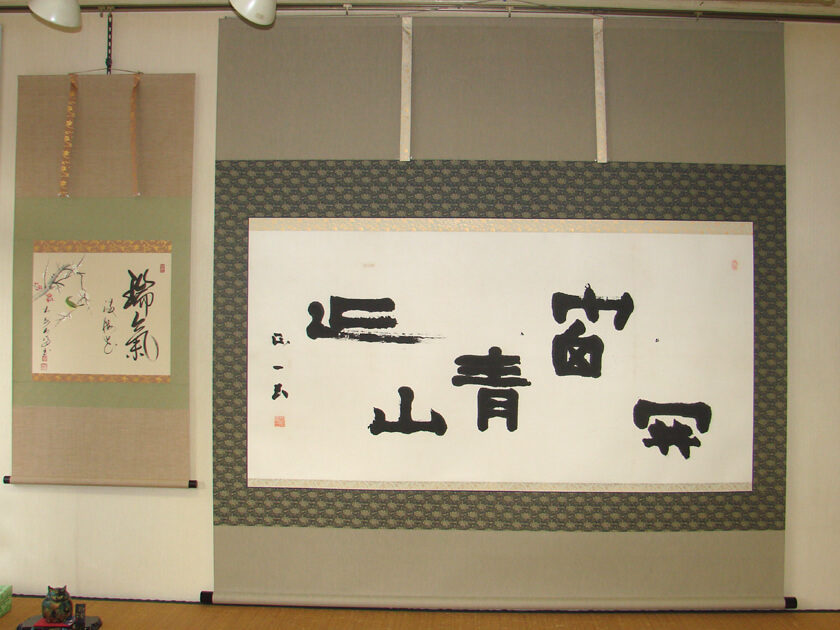Mount Extra Big Kakejiku Hanging Scroll

We received an order for mounting EXTRA BIG kakejiku hanging scroll this time. This calligraphic art work had been originally decorated in a Japanese wooden frame. The width of the frame is approx. 2 m (78.8 inch)… how big!!

We must remove old backing paper from the main art work to convert an framed art work into a kakejiku scroll.
It is extremely difficult to remove old backing paper of framed artworks since mounters usually use very strong paste for them. With strong paste, we have to scrape or rub backing paper off the main art work and we need to concentrate very hard on removing the backing paper only, because if it is done forcibly, it may lead to tear of the main work.
Therefore, if there is a slight chance for your framed artwork to be changed into kakejiku and vice versa in future, we highly recommend you to inform your mounter about it. Then he/she will arrange the paste as he/she thinks best.
Converting Completed! Here’s a New Big Kakejiku!
We managed to complete mounting the extra big art work into a kakejiku! The width of the scroll is approx. 2.5 m (100 inch)… Huge! The hanging rod (hassou), the roller rod (jikubou or jikugi) and the roller knobs are all custom-made. Please take a look at our regular sized kakejiku on the left. You can imagine how big this special kakejiku is.
If you have any requests for mounting an extra big art work into a kakejiku, please feel free to contact us.
Thank you for reading this post.


